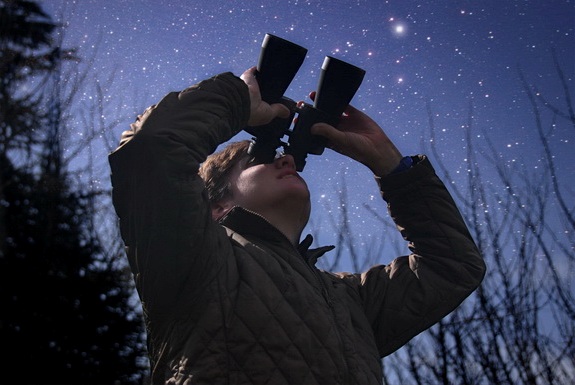Sky Report: January 25 – January 31

Beginning with planets, two are out this evening – Mars and Mercury.
Mercury is hard to see and getting harder by the day. Being on an orbit that is inside ours it never strays far from the sun, so it’s always near the horizon in twilight. It was at its greatest angular separation from the sun, only 19°, on the 24th and then it set 90 minutes after the sun. It’s moving between the earth and sun and it sets earlier each night and becomes progressively harder to see. It’s also becoming fainter as its phase grows from full to crescent. To see it find a place with a very low western horizon and look a half-hour after sunset for a tiny planet that looks like a star. It sets where the sun set, so look there. And use binoculars – they are a must and every astronomer needs a pair. It’s too nearly in line with the sun to see it by the end of the month.
Far easier to see is Mars which rides high in the south at sunset and then moves westward as the sky rotates until it sets around 1 a.m. Mars is as bright as a bright star, but it’s in a part of the sky – Aries – that has no stars that are brighter, so Mars stands out. It’s getting harder to notice its orange color, which was clear only a few months ago, as Mars moves farther away and becomes fainter.
The moon is full on Thursday the 28th. For how long is the moon full? [Pause.] For practical purposes the moon is full all night, but for calculation purposes the moon is full for only an instant, and that instant is 12:17:33 p.m. MST on the 28th. At 12:17 the moon is not yet full and at 12:18 it’s past full. But we think of the moon as being full all night. Which night? If the moon is full at midnight it’s clear which night, but if the moon is full at noon, do we count it as full the night before or the night after? For casual purposes it doesn’t much matter. But do look at it, and use those same binoculars you used to spot Mercury. I recommend 7×50 binoculars for stargazing and you can find an adequate pair for under $50 — and they last forever.
Photo Credit: Gary Seronik
The Sky Report is presented as a public service by the Stellar Vista Observatory, a nonprofit organization based in Kanab, Utah, which provides opportunities for people to observe, appreciate, and comprehend our starry night sky. Additional information is at www.stellarvistaobservatory.org. Send questions and comments to
John@StargazingAdventures.org.






Comments are closed.